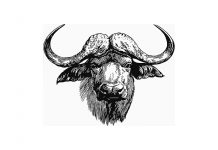I believe many people appreciate the fragrance of lavender. Lavenderis also known as lavandula angustifolia or Lavandula officinalis. Lavender is a type of flowering plants. Its small, blue violet flowers give the herb its fragrant scent. We planted lavender in our front yard as well as back yard. We all enjoy the fragrance and the beautiful purple flowers very much when they are blooming.
Lavender is often used as a medicinal remedy to help in purify the body and spirit, anxiety, depression, stress, insomnia, alopecia (hair loss), postoperative pain (including menstrual pain and cancer-related pain), dementia, lice, constipation, migraines, otitis (ear infection) and fatigue. Lavender oil might also help with reducing blood pressure and heart rate, lessening menopausal hot flashes, and fighting fungus growth (ex. athlete’s foot and ringworm). Research has confirmed that lavender produces slight calming, soothing, and sedative effects when its scent is inhaled. Other uses like lavender in inhalation therapy, herbalists in skin ailments, eczema, and acne.
Lavender has been made into many different forms: Aromatherapy oil, Bath gels, Extracts, capsules or supplements, infusions, lotions, soaps, teas, tinctures, whole, and dried flowers. Furthermore, lavender was used as a holy herb in ancient times (everydayhealth.com).
Although lavender has so many benefits and come with many different forms, using lavender oil on children is not recommended. A study published in the New England Journal of Medicine concluded that lavender and tea oils in some shampoos, soaps, and lotions may cause gynecomastia (breast development) in boys. As for an adult, using the oil internally or externally and/or inhalation should be consulted with a doctor. Furthermore, FDA (Food and Drug Administration has not yet approved of using any forms of Lavender, and should not be replaced any prescribed medications/medicines.
Reference:
- Medical News Today: What are the health benefits and risks of lavender? https://www.medicalnewstoday.com/articles/265922
- Everyday health: What are the possible benefits of Lavender? The must-know facts about the therapeutic plant https://www.everydayhealth.com/diet/what-are-possible-benefits-lavender-must-know-facts-about-therapeutic-plant/
- University of Maryland Medical Center, last reviewed on 1/2/2015 (this link is no longer available)





